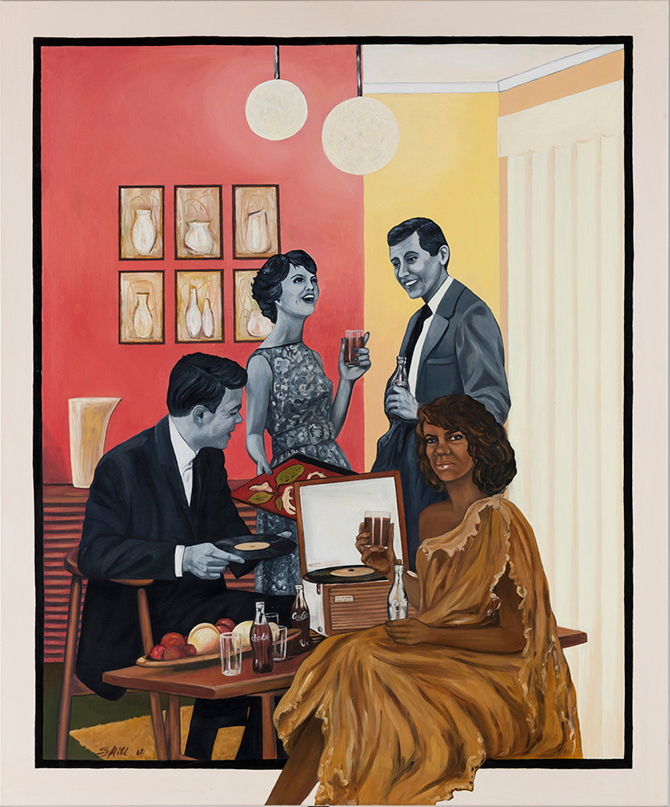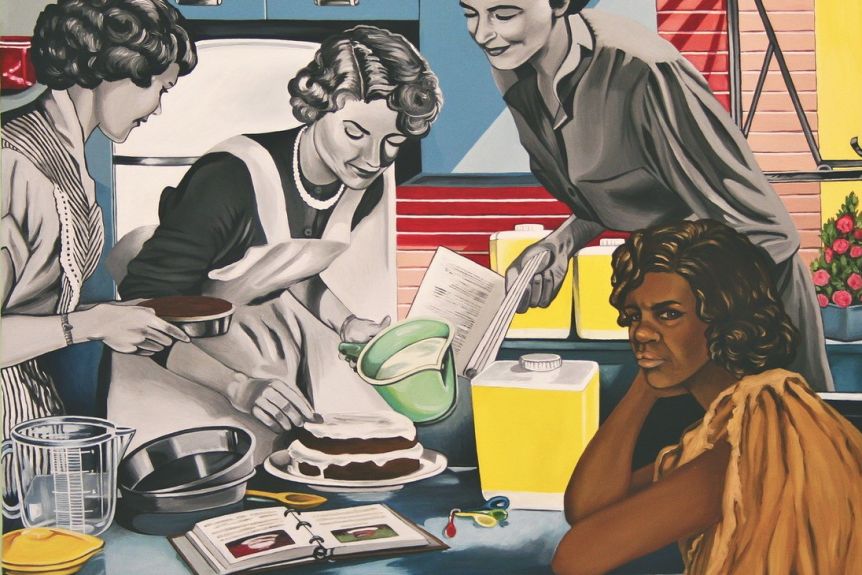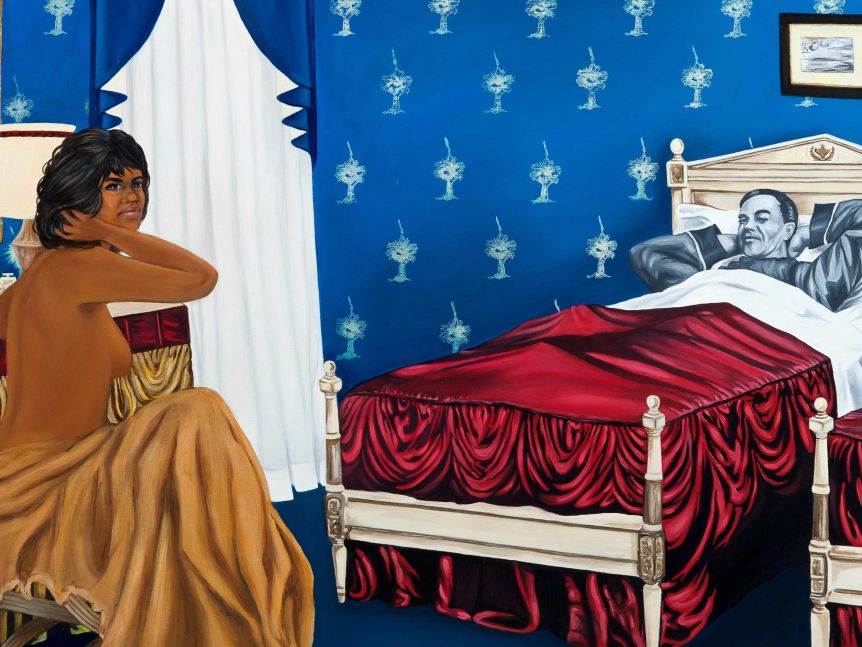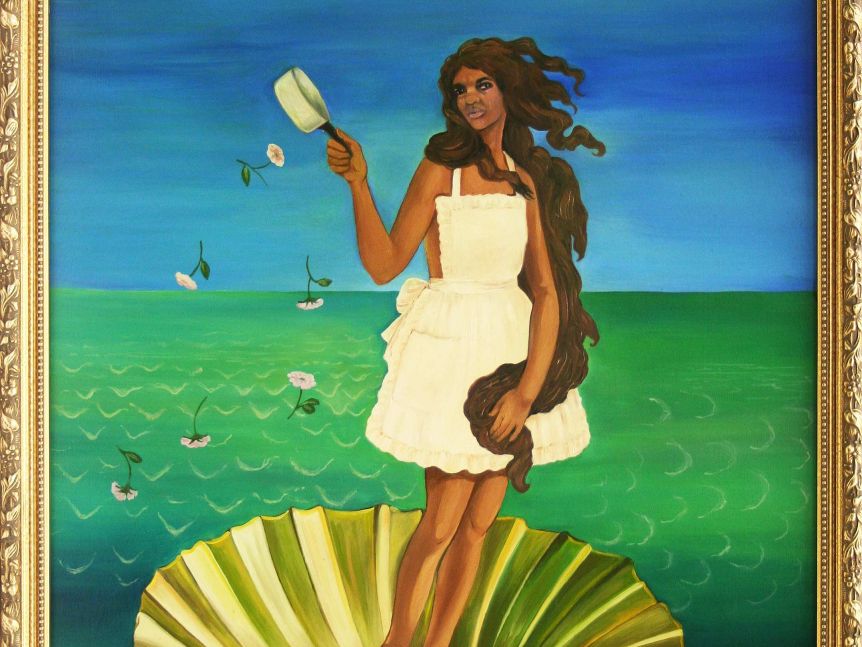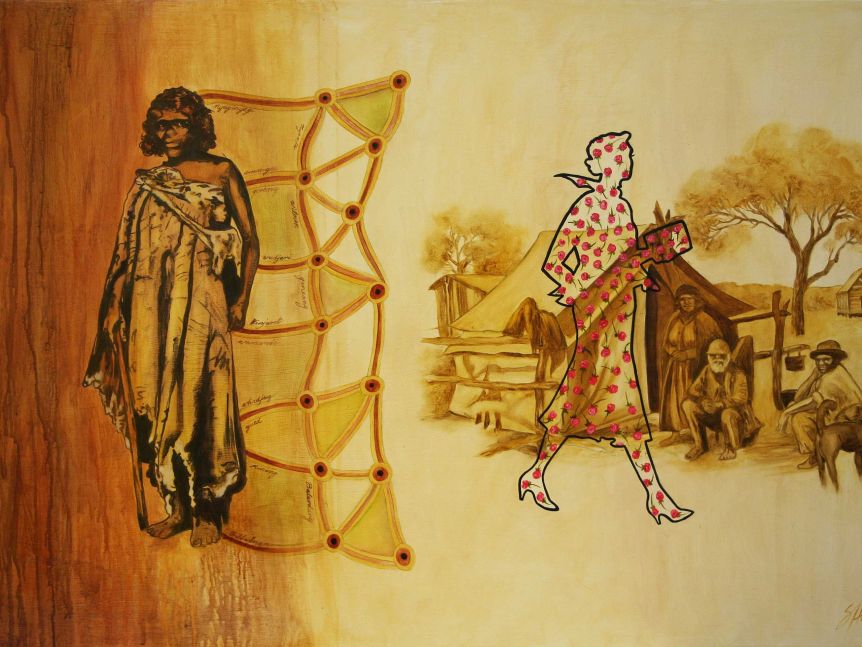Our world right now is shaken and horrified by the atrocities that are occurring in the USA, and while we do our part to support the Black Lives Matter Movement from Australia; one step we can take is to recognise and remember that we as a nation have our own racial injustices in our history.

Perhaps one of the darkest chapters of Australian history was the forced removal of Aboriginal children from their homes and families. Children of all ages were stolen and placed in children’s homes, with foster families, or missions, then released into society once they turned 18- many scarred and still searching for their biological families. These were the Stolen Generations.
Sandra Hill is a Noongar artist and survivor of the Stolen Generations. She is the third generation of her family to be removed and placed in an institution, who are from the Wardandi, Minang, Pibulmun, Ballardong, and Wilmen clans.
Trained in mixed media including painting, printing, collage, sculpture, installation and public art; Hill has used her art to convey the experiences that she and too many others had during their displaced childhood.
In one of her most confronting paintings, Hill shows a group of white women making a cake as an Aboriginal woman looks on.
Hill told RN’s The Art Show that the painting was inspired by events from her childhood that were explained to her years later into her adulthood.
Hill and her older sister spent their childhood with a white foster family after they were forcibly removed from their mother. During this time, the girls were told they could not help their ‘white cousins’ bake a cake.
“I used to wonder about it because my white cousins…could make the cake, and they were there, lined up and licking the bowl and whisking the eggs, and I’d be sitting at the bench watching this happen,” Hill said.
Years later, Hill confronted her white foster mother about this memory and asked why she was told she couldn’t help. While her foster mother was ashamed, she admitted it was because Hill “had dark skin” and she thought that Hill was “too dirty or too grubby to help make the cake.”
Gobsmacked and hurt, Hill chose to use this memory in a way that would help her “move towards some sort of healing”.
Storytelling and Uncovering Lies
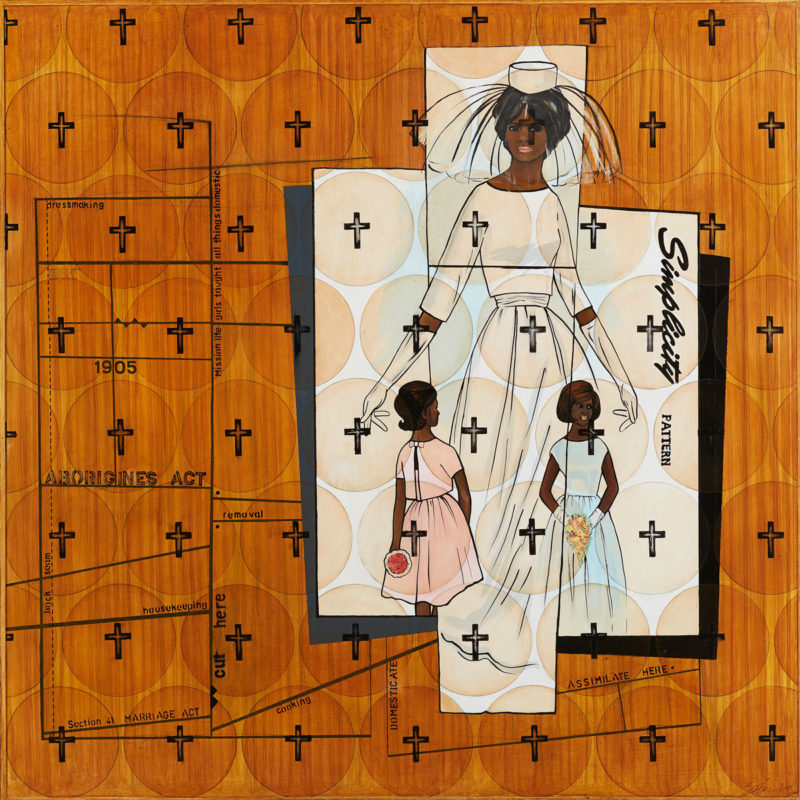
Hill said that the story her siblings and her were given by the welfare was that their mother did not want them, and had left them in a bush under a piece of tin. In 1958, Hill learned that she her three siblings had been taken from their mother and their home when she was just six and a half years old.
They were taken to Sister Kate’s children’s home for “half-caste” children, which has been infamously known as a cruel, violent, and abusive place. Hill stayed at the home for three years before she was moved to her foster family’s home, later joined by her older sister.
“I harboured such hatred and such angst, stress, pain and grief when I was a child and as a young woman, [so] I used to use humour as a foil to cover my pain,” Hill said.
At her foster family’s home, she continuously drew an angel that was inspired by a print she saw in the church at Sister Kate’s. Hill recalled this angel as ‘the only thing that was beautiful’ in the disgusting environment she was subjected to at Sister Kate’s home.
By 16, Hill began taking art more seriously and went on to complete an Advanced Diploma in Art Studies at Perth’s Swan TAFE in 1981. Since then, the angel figure she was so fond of continued to appear in her work.
Home-Maker Series
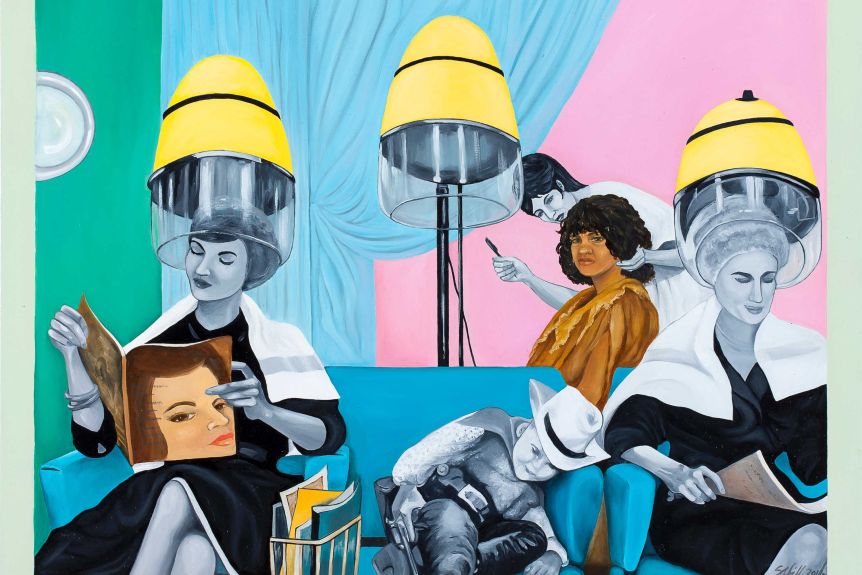
Hill was reunited with her mother in 1985, 27 years after she had been taken. Her mother recounted stories from her years as a maidservant in the homes of white families.
Hill released the sense of alienation and isolation was something her mother and her shared throughout their lives, as they were made to feel like they didn’t belong.
“I could relate to it because I felt the same thing. Not at the level she did but … everyone knew I was Aboriginal and they kind of looked down at me,” Hill said.
The Home-Maker Series (which includes The Cakemaker) was then created, inspired by her mother’s experiences. Each painting in the series portrays an Aboriginal woman in a bookah (a kangaroo-skin cloak) in a brightly coloured domestic setting. The white people depicted in the series are painted in grey tones which creates a sense of segregation.
Hill notes that this was intentional as it reflected the method of “examining the skin-tone” that many Aboriginal people forcibly underwent in the mission to “breed out the black”.
Hill’s mother and aunty were at the Moore River Native Settlement when Western Australia’s Chief Protector of Aborigines, AO Neville, visited to examine their skin and were deemed ‘lighter-skinned’ and therefore sent to Sister Kate’s children’s home. The same home Hill and her sister would be sent to many years later.
Hill took this grading that Neville was doing to determine to colour level of an Aboriginal child, and used it on the white people she painted; making them different shades of grey.
Reconnecting and Healing
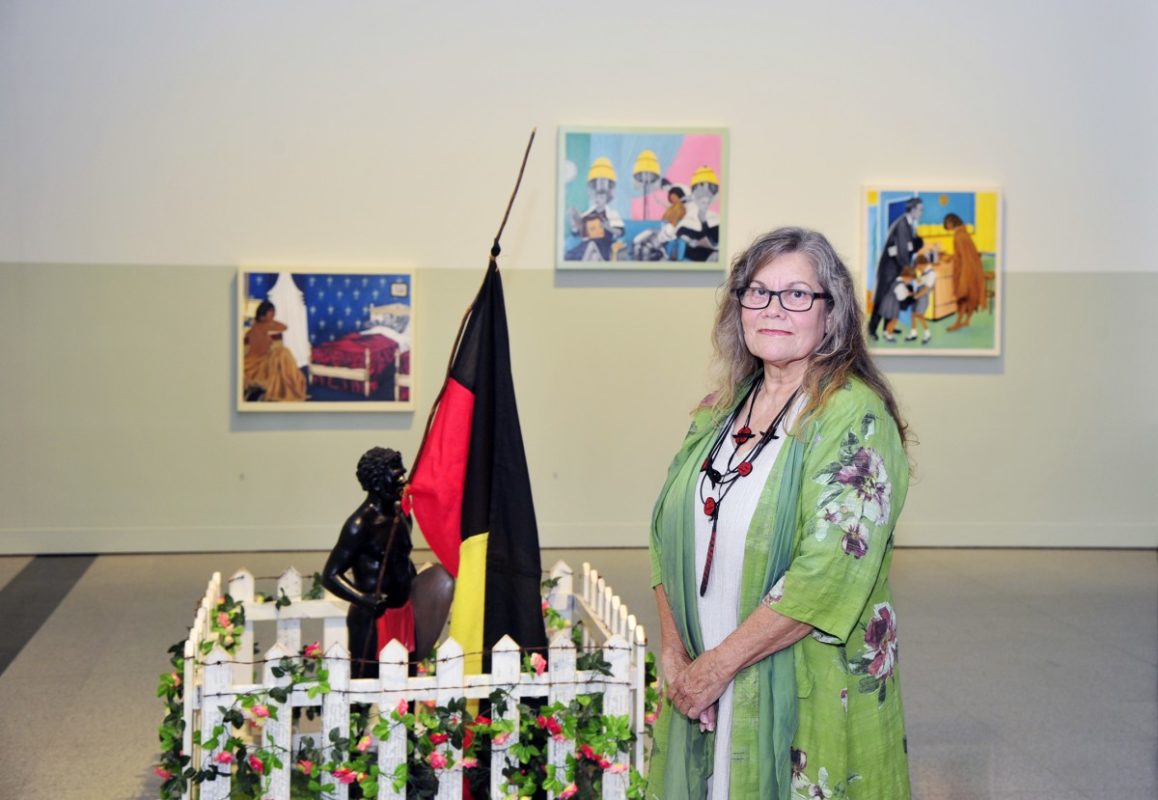
Hill is now a Wardandi elder and custodian, she lives in Balingup which is a small village in Wardandi country.
As a board member for Wardandi’s association, Undalup, she has been assisting in the effort to establish the first gallery and education centre dedicated to south-west Western Australian Aboriginal art.
“If we don’t do something in the very near future, we’re going to lose a generation of our young people because they’re not going to have a pathway to move towards,” says the artist. I like to think that we’re going to create a movement which will be an Aboriginal arts movement with Aboriginal rules and Aboriginal parameters,” she said.
One of Hill’s main focuses is to connect students with their country, and their descendants. As elders continue to pass away, the urgency to reconnect people from the Stolen Generations in order to continue the passing of information and knowledge, grows.
Today, Hill 25 years of public art under her belt, and has recently been commissioned to make a new public artwork acknowledging the Stolen Generations for Perth’s Wellington Square.
The work will consist of five traditional dwellings, or mia-mias, to serve as a place for Aboriginal people to come together and share their stories. Hill says this will be one of her final pieces of public art, and hopes it will be a beacon for Stolen Generation people to find their way home.
“If I couldn’t have the healing process of telling my stories through art, I can’t even imagine where I would be today and what condition I’d be in,” she says.
Take a look at some of Sandra Hill’s paintings down below.
Subscribe to FIB’s Weekly Alchemy Report for your weekly dose of music, fashion and pop culture news!



